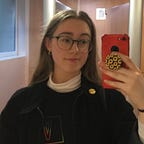Infographics: the Ethics of ‘Aesthetic Activism’
A God-sent gift for those of us with short attention spans, and a curse for those that love the details – who will win the war on Instagram infographics?
Infographics are visual representations of key information, usually brightly coloured graphs or colour-coordinated bullet points, that have been rapidly gaining popularity on social media over the last year.
The entire evolution of an apartheid is being condensed into one aesthetically appealing square. Social equality movements become a pastel themed graph while the climate emergency is being transformed into two or three handpicked facts on a backdrop of minimalistic watercolour flames. Designers must be clapping their hands seeing that they can contribute to spreading awareness using just an embroidery hoop and coloured cotton. But is it ethical? Personally, I’m unsure. I have a notoriously useless memory, and trying to learn facts from a book or an article results in me recapping the same paragraph multiple times to get the important points to stay in my head (you can imagine how fun this makes academic reading for university).
Scrolling through Instagram and seeing a very brief summary of events, like the ongoing situation in Palestine, allows people like me to understand the basics and then be able to better understand further research. Although the BBC and Guardian use relatively understandable language, many other platforms use language that requires a dictionary to grasp – simple Infographics can help simplify this process and provide the foundation of more detailed research.
The problem here, of course, is that many people won’t take the next step to search things up in more detail and having only the briefest of understandings about something of international importance doesn’t seem helpful.
The amount of misinformation spread across the internet means it can actually be dangerous to only believe what you’re reading from one source. A study found that false stories are retweeted up to 70% more than true stories. A solution I’ve been seeing for this problem lately, though, is the inclusion of reliable sources on the Infographic. Now, an account can ‘prove’ its legitimacy by directly pointing towards where its information has come from. Many of the sources I’ve seen on infographics have been surprisingly credible – the BBC, the Guardian, academic journals, and research studies are often cited- either in small font at the bottom of the main infographic, or they have an entire slide devoted to them as the second panel on the Instagram post.
So, if credible sources are given for further research, and the infographic provides a sufficient outline and history- why are some social media users still against them? My only possible answer is the moral dilemma of aesthetics. There is certainly an ethical issue with looking at the scenes of destruction and loss in Palestine and deciding an appropriate backdrop to present this information on is bright pink with a curly font. The situation is grave and has garnered global concern for the violence- the infographics should reflect this. Likewise, last summer, I saw pastel-themed, pretty graphics used to present information about the racist actions of police in America. I wondered how the creators of the posts hadn’t realised how inappropriate it was to make something so horrific try to match the colour theme of their account. Even actress Emma Watson posted a black square with a white border so it suited the layout of her other posts. It’s the most valid grievance against infographics, and should be considered during the design process. Part of the effectiveness of infographics lie in their simple, to-the-point design but this shouldn’t permit the glorifying of horrific events.
